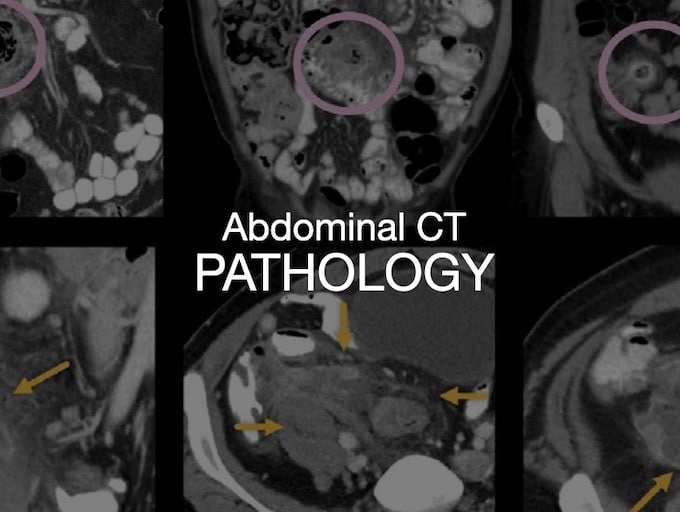
Abdominal CT: necrotizing pancreatitis
Abdominal CT: pancreatitis. Recognizing acute necrotizing pancreatitis; and late stage development of pseudocysts and walled-off necrosis

Abdominal CT: pancreatitis. Recognizing acute necrotizing pancreatitis; and late stage development of pseudocysts and walled-off necrosis

Abdominal CT: bowel perforation. Perforation of the gastrointestinal tract can be due to a variety of causes.

A 92-year-female presents with RUQ pain, back pain, fevers and vomiting. Symptoms had been ongoing for the last 24 hours.

Dr Nikolaus Mayr, we review strategies to ultrasound the pancreas and help identify pancreatitis with the help of ultrasound imaging.

Non-traumatic abdominal ecchymosis of the abdominal wall and flanks (Grey Turner, Cullen and Stabler); scrotum (Bryant) and upper thigh (Fox) as clues to potentially serious causes of abdominal pathology.

Cullen sign: superficial bruising in the subcutaneous fat around the umbilicus. 1918 Thomas Cullen (1869-1953) ruptured ectopic pregnancy

Grey Turner sign refers to bruising of the flanks. Originally described 1919 (published 1920) by George Grey Turner (1877–1951) most commonly associated with acute pancreatitis

George Grey Turner (1877–1951) English surgeon. Eponym: Grey Turner sign after description of flank ecchymosis in 1919 (published 1920)

Fox's sign: non-traumatic ecchymosis over the upper outer aspect of the thigh secondary to abdominal haemorrhage. First described by English surgeon John Adrian Fox in 1966

John Adrian Fox English surgeon. Eponym: Fox's sign (1966) non-traumatic ecchymosis upper outer thigh with abdominal haemorrhage

A 57 year old man presents to the ED with 18 hours of severe upper abdominal pain, fever, nausea and vomiting. He looks jaundiced, his HR is 120bpm, BP 110/60, RR 22 and his temperature is 37.8oC. He is tender and guarded in his right upper quadrant on abdominal palpation.

Pancreatitis is inflammation of the pancreas and involves activation of proteolytic enzymes that may progress to haemorrhagic necrosis of the pancreatic parenchyma